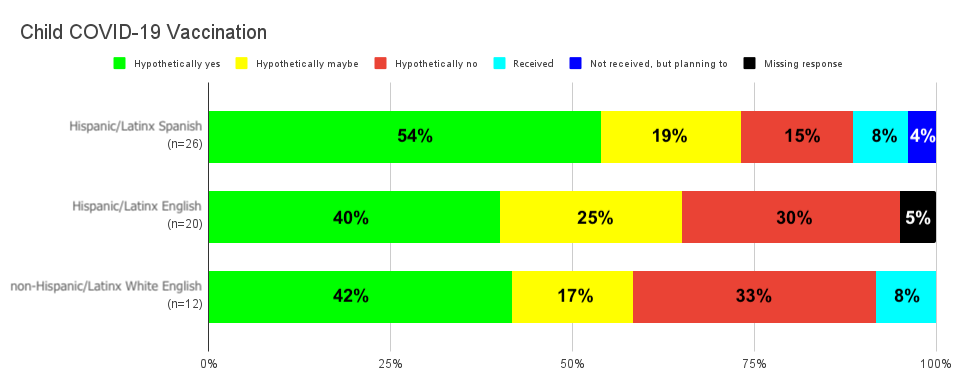Back
Immunizations/Delivery
Category: Abstract Submission
Immunizations/Delivery I
503 - Attitudes about the COVID-19 Vaccine of Parents in the Pediatric Emergency Department
Sunday, April 24, 2022
3:30 PM – 6:00 PM US MT
Poster Number: 503
Publication Number: 503.325
Publication Number: 503.325
Jared Schiff, Children's Hospital Los Angeles, Los Angeles, CA, United States; Danica B. Liberman, Children's Hospital Los Angeles, Los Angeles, CA, United States; Phung K. Pham, Children's Hospital Los Angeles, Los Angeles, CA, United States; Anita R. Schmidt, Children's Hospital Los Angeles, Los Angeles, CA, United States; Pradip P. Chaudhari, Children's Hospital Los Angeles, Los Angeles, CA, United States; Jocelyn B. Pérez, Children's Hospital Los Angeles, Moreno Valley, CA, United States; Pia Pannaraj, Children's Hospital Los Angeles, Los Angeles, CA, United States

Jared Schiff, MD
Pediatric Emergency Fellow
Children's Hospital Los Angeles
Los Angeles, California, United States
Presenting Author(s)
Background: COVID-19 vaccinations are now recommended in the US for children aged ≥5 years. Nationally to date, 62% of children aged 12-17 years and 19% of children aged 5-11 years have been vaccinated against COVID-19. Rates in California are lower in the Hispanic/Latinx population. Because the pandemic has made it more difficult to access routine healthcare, the emergency department (ED) provides an access point to increase pediatric COVID-19 vaccination rates.
Objective: We examined parental attitudes towards COVID-19 vaccination and identified dimensions of parental vaccine hesitancy, using the World Health Organization’s 4C vaccine hesitancy framework (calculation, complacency, confidence, convenience), and assessed parental willingness to have their child receive the COVID-19 vaccine.
Design/Methods: Our research was conducted as part of a larger multi-methods study examining influenza vaccine hesitancy, with the majority of the interviews conducted prior to COVID-19 vaccine authorization for children. We used directed content analysis to extract qualitative themes from 3 groups of parents in the ED: Hispanic/Latinx Spanish speaking (HS), Hispanic/Latinx English speaking (HE), non-Hispanic/Latinx White English speaking (WE). We used quota sampling up until the point of thematic saturation. Themes were triangulated with Parent Attitudes about Childhood Vaccines (PACV) survey, with lower scores (0-100) indicating lower vaccine hesitancy.
Results: Factors influencing vaccine hesitancy were mapped to the 4C framework from 58 sets of interviews and PACVs. HE and HS parents, compared to WE parents, had less knowledge about COVID-19 and its vaccine, and more beliefs in COVID-19 vaccine myths (Table). However, both HS and HE parent groups were more inclined to endorse COVID-19 vaccine effectiveness as a reason to have their children receive the vaccine. HS parents felt that COVID-19 increased their fear of illnesses in general, and were worried about confusing influenza symptoms for COVID-19 symptoms. Both HS and HE parent groups had higher median PACV scores than WE parents (Figure 1), but parental willingness to have their child receive COVID-19 vaccination was similar among the three groups (Figure 2). Conclusion(s): Higher COVID-19 vaccine hesitancy among HS and HE parents compared to WE parents, may be attributed to insufficient knowledge about both COVID-19 and its vaccine, along with COVID-19 vaccine myths. Further efforts to provide targeted vaccine education to the Hispanic/Latinx population is warranted.
Curriculum VitaeCV JS.pdf
Parental Willingness to Have Their Child Receive COVID-19 Vaccination Parental willingness to have their child receive COVID-19 vaccination was similar among the three groups, at the time of their interviews.
Parental willingness to have their child receive COVID-19 vaccination was similar among the three groups, at the time of their interviews.
Objective: We examined parental attitudes towards COVID-19 vaccination and identified dimensions of parental vaccine hesitancy, using the World Health Organization’s 4C vaccine hesitancy framework (calculation, complacency, confidence, convenience), and assessed parental willingness to have their child receive the COVID-19 vaccine.
Design/Methods: Our research was conducted as part of a larger multi-methods study examining influenza vaccine hesitancy, with the majority of the interviews conducted prior to COVID-19 vaccine authorization for children. We used directed content analysis to extract qualitative themes from 3 groups of parents in the ED: Hispanic/Latinx Spanish speaking (HS), Hispanic/Latinx English speaking (HE), non-Hispanic/Latinx White English speaking (WE). We used quota sampling up until the point of thematic saturation. Themes were triangulated with Parent Attitudes about Childhood Vaccines (PACV) survey, with lower scores (0-100) indicating lower vaccine hesitancy.
Results: Factors influencing vaccine hesitancy were mapped to the 4C framework from 58 sets of interviews and PACVs. HE and HS parents, compared to WE parents, had less knowledge about COVID-19 and its vaccine, and more beliefs in COVID-19 vaccine myths (Table). However, both HS and HE parent groups were more inclined to endorse COVID-19 vaccine effectiveness as a reason to have their children receive the vaccine. HS parents felt that COVID-19 increased their fear of illnesses in general, and were worried about confusing influenza symptoms for COVID-19 symptoms. Both HS and HE parent groups had higher median PACV scores than WE parents (Figure 1), but parental willingness to have their child receive COVID-19 vaccination was similar among the three groups (Figure 2). Conclusion(s): Higher COVID-19 vaccine hesitancy among HS and HE parents compared to WE parents, may be attributed to insufficient knowledge about both COVID-19 and its vaccine, along with COVID-19 vaccine myths. Further efforts to provide targeted vaccine education to the Hispanic/Latinx population is warranted.
Curriculum VitaeCV JS.pdf
Parental Willingness to Have Their Child Receive COVID-19 Vaccination
 Parental willingness to have their child receive COVID-19 vaccination was similar among the three groups, at the time of their interviews.
Parental willingness to have their child receive COVID-19 vaccination was similar among the three groups, at the time of their interviews.